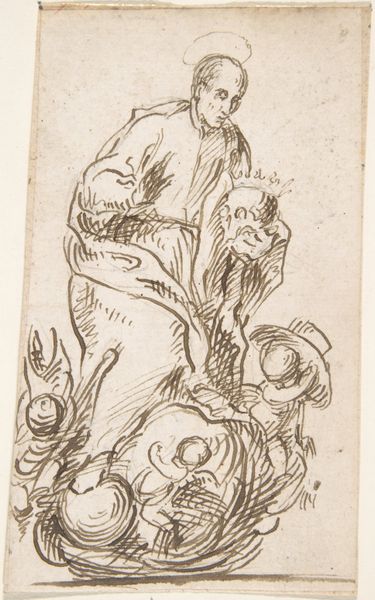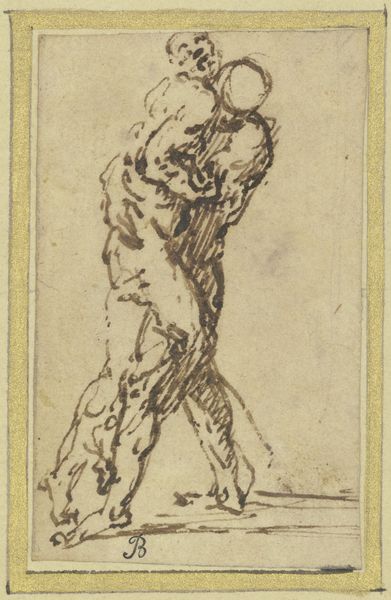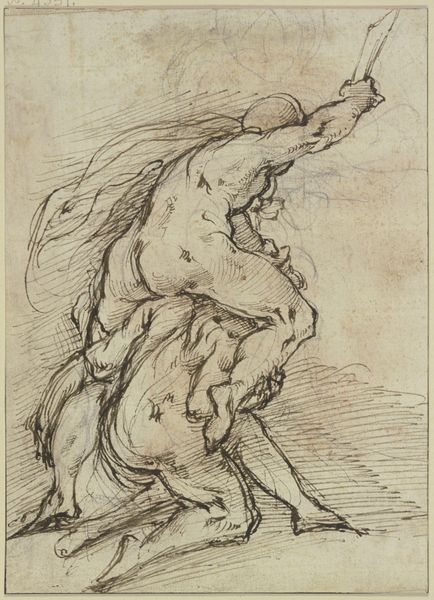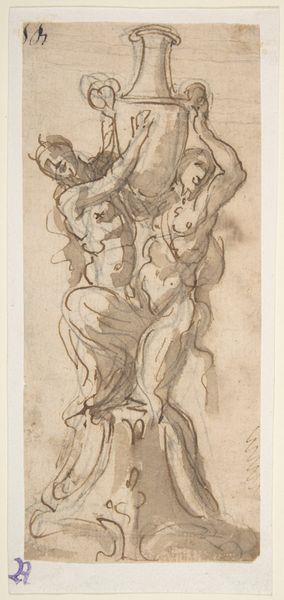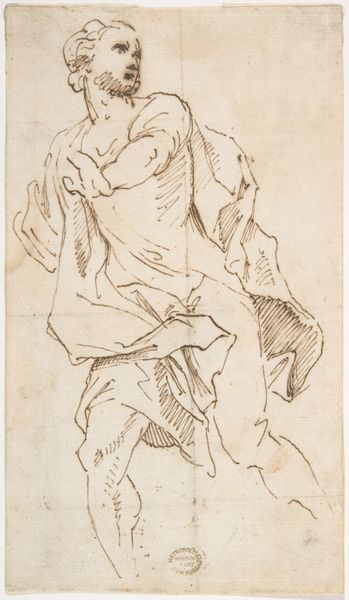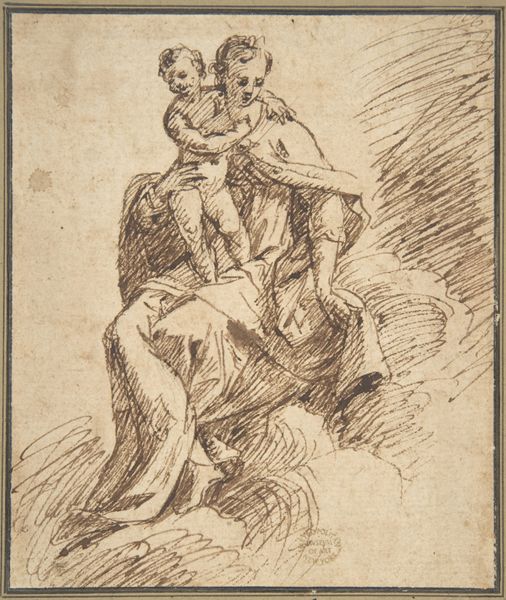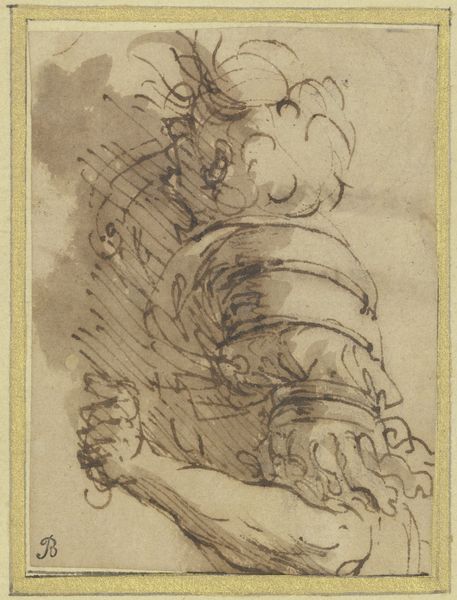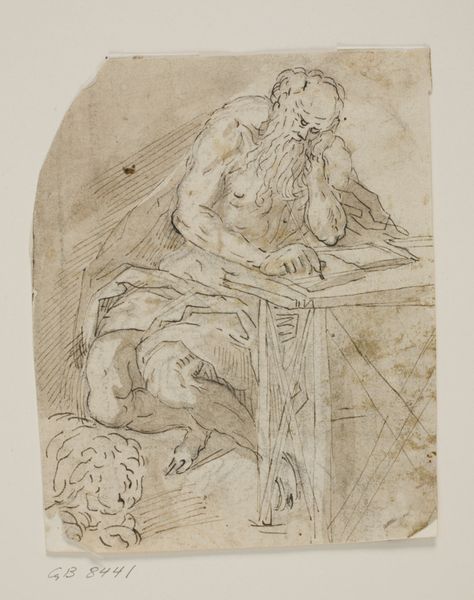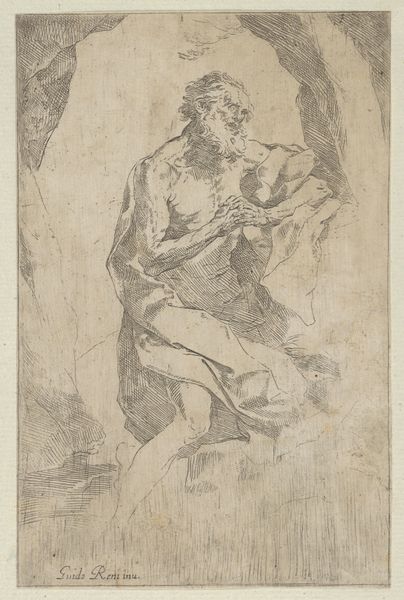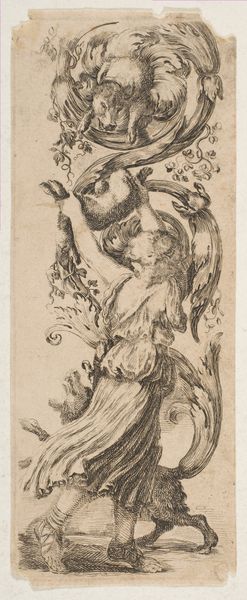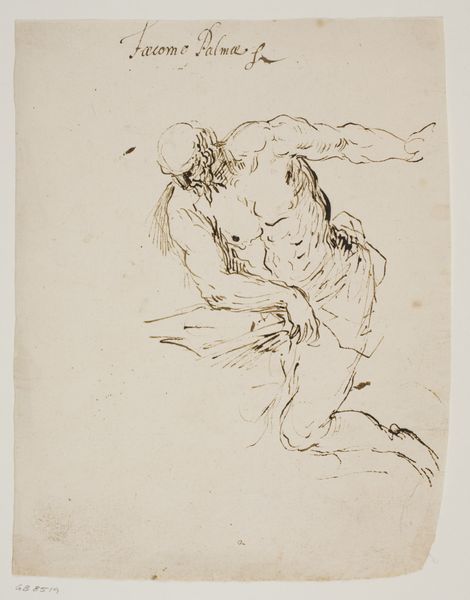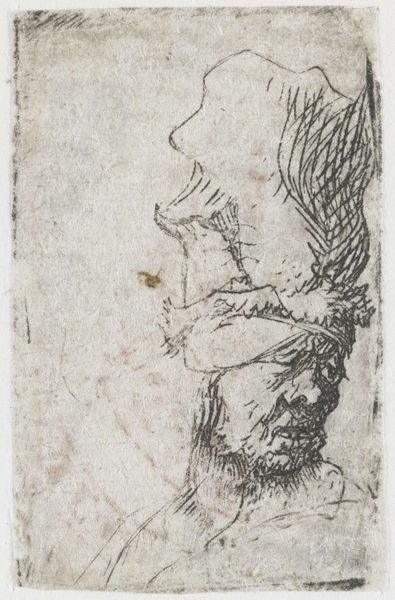
Study of a Seated Nude, Bearded Man in Half-Length 1590 - 1654
0:00
0:00
drawing, paper, ink
#
portrait
#
drawing
#
ink drawing
#
baroque
#
ink painting
#
pen sketch
#
figuration
#
paper
#
ink
#
academic-art
#
nude
#
male-nude
Dimensions: 5-3/4 x 4-7/8 in. (14.6 x 12.4 cm)
Copyright: Public Domain
Curator: The piece before us is "Study of a Seated Nude, Bearded Man in Half-Length," an ink drawing on paper created by Francisco de Herrera, the Elder, sometime between 1590 and 1654. It resides here at the Metropolitan Museum of Art. Editor: My first impression is the dynamic tension in the figure itself. He appears simultaneously powerful yet vulnerable, caught in this swirling mass of ink lines. Curator: Herrera's artistic production existed within the burgeoning atmosphere of Spanish Golden Age art. There were complex shifts occurring politically and religiously in Spain, impacting both art production and consumption, so I wonder how the public may have received works depicting male nudes, what societal power dynamics are at play, and who has historically had access to such images. Editor: I see the male nude within a complicated historical context. Throughout Western art history, the male nude has represented idealized masculinity, power, but simultaneously, it also carried queer undertones, challenging these norms. Herrera’s nude, with its visible lines of aging and less-than-perfect physique, adds further complication. The deliberate use of cross-hatching provides depth and volume. Could we view it as a subversive statement? Curator: Subversion is a compelling framing, and his academic influence shouldn't be ignored; art schools and royal patronage affected how and what kinds of works were shown, thus wielding an influence over aesthetics. Perhaps Herrera was making a statement simply through portraying an unidealized male nude form during that time. It pushes against these historical currents in some sense. Editor: Perhaps he wasn't making a pointed political statement, and was more about studying the body; still the historical implications reverberate to our present as the piece remains a testament to evolving notions of gender, identity, and art’s societal role. Curator: And it emphasizes how artistic choices are never made in a vacuum, but reflect the spirit of the times while potentially disrupting prevailing attitudes. Thank you for adding additional, yet relevant, sociocultural frameworks for me to think about in relation to Herrera's works and more broadly, what other questions can we bring into these spaces that amplify minoritarian, feminist, and intersectional voices in the realm of art historical critique. Editor: Absolutely. There is always space to ask more from these inherited images and archives, so they stay vibrant.
Comments
No comments
Be the first to comment and join the conversation on the ultimate creative platform.
